MONA ROY | Lessons in Unsung Joy
With over two decades in music education, Roy has created a revolutionary career built on representation, community, and pure joy.
“You probably know more about me than any student ever.”
Mona Roy laughs, her tone lighthearted and sincere. “This is profoundly different — I never had this kind of time to talk. Let alone to a 12-year-old.”
For Roy, a beloved middle school choral and vocal director, community is at the heart of everything she does. Throughout her 21 years of teaching, she has performed and conducted hundreds of concerts, musicals, and festivals — all while teaching thousands of young students (myself, included). Somehow still, almost a decade later, we reconnect as if no time has passed.

We typically dismiss the middle school years — the unending stretch of time from ages 11 to 13. Often, we cast them aside as an awkward punchline age, or a shoulder-shuddering reminder of who we used to be. Yet, the minute we’ve cleared these uncomfortable years, we forget how serious and earth-shattering they once felt.
You’re in a strange in-between stage of your life, where everything feels weird, and everything is changing. Suddenly, you become hyperaware of every minor change to your face and body, your heartbeat starts racing when you get even the slightest bit nervous, and you suddenly have an insatiable desire to be liked…by everyone.
Naturally, as a middle school teacher, this is something Roy understands intimately. Year after year, she has seen students nervously enter her classroom, unsure of what to expect. What has continued setting Roy apart is she takes their dreams, doubts, and feelings seriously — as awkward, confusing, or sweaty as they might be.
At an age where so many of your passions and dreams are dismissed, Roy comes in with a remarkable kindness and seriousness. With unending support and sincerity, she emphasizes that what you love and what moves you matters.
“Especially during those continuing formative years in middle school, you’re still so loyal and impressionable,” she says. “There’s so much doubt.”
Now, over a decade later, I can still say in complete earnest: in my young mind, life began at 12 years old. Though it sounds hopelessly dramatic, so much of my personality and passions were shaped during those three years, in that fated choir room. Under the direction of Roy, the only Asian vocal arts teacher I’ve ever learned under, it was life changing. With music, it felt like my whole world was just opening up.
“Seeing students who were just very scared and doubtful, but through music, discover more of themselves and connect as a group,” Roy recalls fondly. “Those are my favorite moments.”
She adds, “Sometimes you don’t hear any of the after stuff. But that’s always exciting, too.”
Even with the thousands of lives Roy has touched, she remembers every story and experience as if they were her own.
This story is not only a love letter to music and the immigrant dream, but the epic, unsung story of the brilliant Mrs. Mona Jethmalani Roy.
Beginnings
For Roy, a love of the arts was woven into the very fabric of her family’s history. Back in India, her late mother — who passed when Roy was 13 — had a childhood filled with endless theatre and song. Music was a gift, lovingly passed down to each generation.
“Music seemed a bit hardwired into my family. My whole mom’s side is very musical and artistic, so it felt natural growing up.”
When her mother came to the U.S. in the seventies, she arrived wide-eyed and eager for community. Her multi-hyphenated list of accomplishments included director, choreographer, radio talk show host, singer, and even owner of Indian-based Kala Academy of Performing Arts in Chicago. Roy’s brother Anish would soon also catch the performing bug, becoming a celebrated actor, who recently starred on Broadway in Chicago’s The Lehman Trilogy and the South Asian comedy Deli Boys on Hulu.
Growing up, the Indian pop scene was significantly smaller in the city. When her mother’s performing arts company first opened, it quickly filled a hole that was missing in the Indian community. By the eighties, she became somewhat of a Chicago celebrity.
“My mom was famous in the city, just because that whole cultural group gravitated towards the performing arts space she had created.”
As a first-generation Indian American, Roy looks back at her childhood as a balancing act. Her mother encouraged her to perform in Hindi plays, learning the great works of classical dance in glittering traditional dress. In her spare time, Roy would also explore what she described as her “Western interests,” by cranking up the Top 50 and testing out moody black nail polish.
“I was immersed in that world [of classical music], but a lot of my passions were pulled from mainstream pop around me,” she says. “Naturally, I could feel myself grow as a musician and wanted to do more.”
Growing Up
This unfaltering love for music remained a constant for Roy, throughout her childhood and young adult life.
“Especially being young, I think I just had an appetite for it. I loved singing at school — even in recorder class,” Roy laughs. “I geeked out about it. I was even in Advanced Recorder Club because I just loved it so much.”
Growing up, Roy’s neighborhood was “pretty diverse,” with several of the children also having immigrant parents.
“I was very grateful for early friendships with other kids of color, all on the same block,” she describes. “I had an anchor of a friend group who made me feel like I had a place to fit in.”
When she started high school, Roy began truly carving out who she was — not just as a musician, but as a person.
She explored different genres with a passionate hunger, from grunge and classical rock, to choral. Her teens were also when her community began to slowly shift and become notably less diverse — in school and the performing arts.
“As you do when you’re young, I was figuring out my passions and identity. In middle school, I felt like I had a place where I belonged. And then in high school, I was channeling my whole music identity. Music was part of how I expressed myself.”
She laughs, adding, “In my high school photos, I had all kinds of things going on. Attire, makeup…I definitely had teenage angst.”
For as long as Roy could remember, there wasn’t much representation for Asian-Americans in the arts.
As of 2022, 3.7% of Broadway actors identified as Asian American. Within 2021 - 2022, there were no lead roles played by Asian American, Latino, MENA, or indigenous actors (AAPAC).
This longing for community and representation led Roy to carve a path forward for herself, built on intention and exploration.
In college, she’d sing duets with another female Indian classmate, and even started an Indian electronic fusion band, Karma Sutra (mixing electronic pop with Indian roots). Throughout her twenties, Roy performed extensively in the Chicagoland area and region, college campuses, and festivals like the South Asian Arts Festival in Los Angeles. Together, the band even produced two albums.
These experiences opened up a whole new world of music and belonging for Roy.
“We were progressive, in that sense, of making hybrid music.” She notes they were especially inspired by the Chicago native group Funkadesi, an award-winning, genre-bending Bhangra, reggae, Bollywood, and funk band.
“Rahul Sharma was also brilliant and progressive in incorporating first-generation roots and exploring how to merge the two,” she says of the group’s founder. “Our loves for both growing up — having immigrant parents and growing up in a strong Indian culture.”
She adds, “Funkadesi is still going strong today, an influential staple in the Chicagoland world of music. I’m honored to have collaborated with them.”
At age 27, after having an exceptionally music-oriented life, Roy met her first female South Asian music educators. She was in grad school at the time. From there, she slowly began seeing more Indian women in music.
Even after all this time, she catches me up on where they are now. This is a common theme with Roy — she stills keeps in touch with many of her mentors and role models.
After school, Roy received a callback for a Broadway show in New York City titled Bombay Dreams — one of the first Asian-inspired productions on theatre’s biggest stage. She had been one of three actresses narrowed down to lead the Bollywood-themed show, which she affectionately describes as just another “interesting piece” of her life. At the time, she remembers wondering if people would even be interested in attending.
Bombay Dreams was originally produced by Andrew Lloyd Webber and ran on Broadway from April 2004 to January 2005, after 284 performances and three Tony nominations for Costume Design, Choreography, and Orchestration (Playbill).
As she reflects upon representation in theatre now, she tells me about Shoba Narayan, the first Indian actress to play Eliza in Hamilton.
“I feel like I know her,” she laughs. “Because in another life, that could’ve been me!”
Upon graduation, many of Roy’s friends moved to LA to find success in TV and film. Every day, the industry began to slowly shift, with the hope that the stories being pushed out would become more inclusive.
“I stayed put [in Illinois], but that was an exciting little time.” I can hear her smiling from the phone at the memory.
“Little pieces of me were trying to change the landscape and put a little more representation out there. I was part of all that. There weren’t a whole lot of role models out there, besides the people I was meeting there, at the moment.”
Teaching
As Roy was navigating her education, she had doubts about supporting herself post-grad with music — especially being first-generation.
It’s no secret that the arts can be a fickle pathway. While fueled by passion and joy, its return can be unstable, inconsistent, and, at times, heartbreaking. However, she says she feels most grateful for her dad in her career journey, who never put pressure on her to pursue a specific career path.
Her dad, who had an engineering background in India, worked tirelessly as a taxi and ice cream truck driver when first arriving to America.
“When I was thinking of pursuing performing arts, I feel grateful because I didn’t have what some may consider a common Indian parent, persuading me to pursue medicine or engineering,” she says. “He gave me the breathing room to think about what I was passionate about.”
Her parents had divorced when she was young, and especially after her mother passed away, she says her dad had always been a “constant.” He was also her biggest supporter as she began discovering her love for teaching. She describes high school as a real “turning point” in her career.
“I had the opportunity to conduct, to look at a score through the lens of ‘I can do this.’ I feel like I can give direction and give back and create something special through music,” she describes.
**
As she began carving out her career, as an Asian-American teacher, Roy quickly began to recognize the weight of representation.
“Because I have a different background, it was important for me that the students knew about it. Because the world isn’t just our small town,” she says. “I wanted choir to be a space where others could learn and explore…and there weren’t always avenues for that.”
Time and time again, Roy emphasized the importance in building a community of trust and positivity. This led her to start the school’s first girls’ chamber choir, Bella Voce, and a boys’ singing group, Valiant Voices.
Joining Bella Voce was one of the most exciting moments in my middle school education. I think warmly back to the countless weekdays spent singing after school, and about the confidence that group gave me — in not just my voice, but myself.
“The whole reason I started Bella Voce was because I knew our students needed more, and we needed to offer more,” she says.
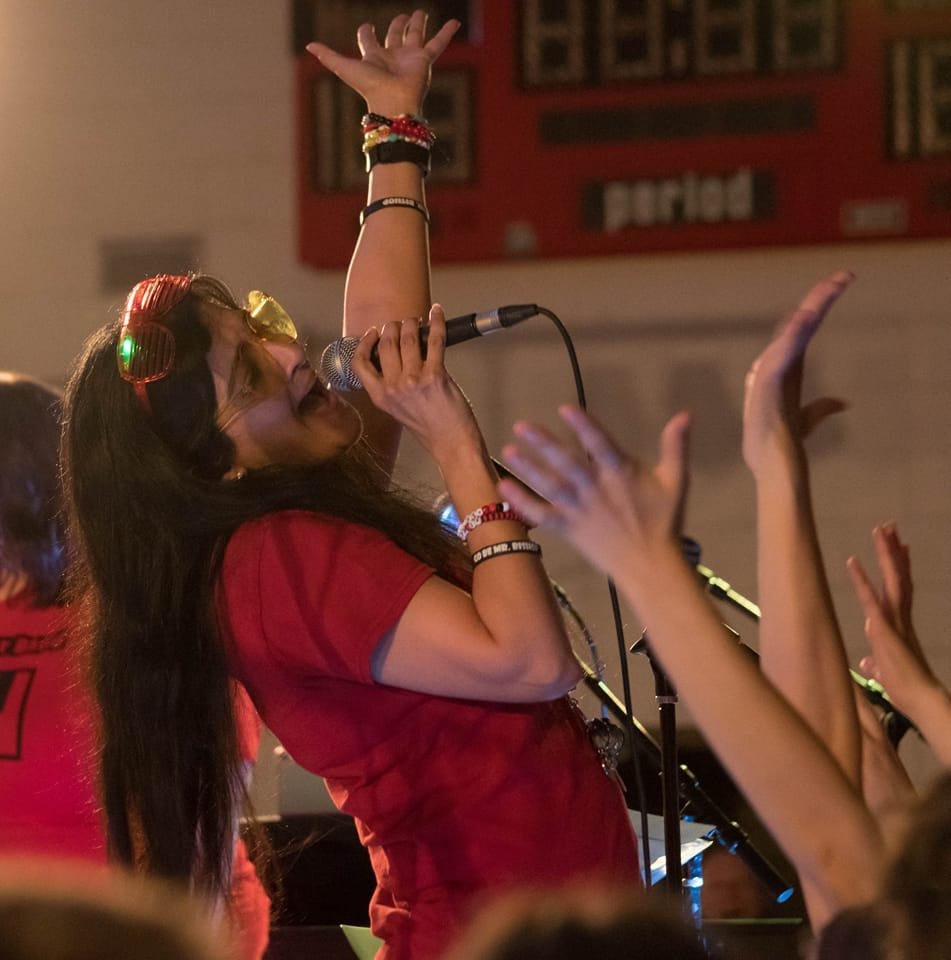
On top of extracurricular choirs, Roy helps young performers prepare for our middle school’s annual “Schoolapalooza” rock concert. Coming on its 22nd year, the beloved after-school event gives students the opportunity to confidently own the stage and experience live music with their peers.
To this day, Roy has also helped co-music direct the school’s eagerly anticipated yearly musicals since 2007. These elaborate productions take place at the local community college’s 662-seat theater, with beautifully intricate sets and costumes.
Together, it’s a testament to her devotion towards her students, and in her deep passion for building community.
“Just being reminded of our human side first — everyone wants to feel like they’re connected to something…to find a space,” she says. “It’s always a work in progress for me as a person, a teacher.”
Bella Voce performing “Bring Me Little Water, Sylvie” at a regional contest. (You can see me awkwardly over-swaying at very end of the top right row. I was never much of a dancer.) | 2013
As Roy continued creating an inclusive community, she noticed another area in need of attention — choral repertoire.
Early in her career, she struggled to find meaningful, non-Western choral pieces that resonated artistically. For Roy, sourcing music was not just about “ticking a box,” but finding meaningful pieces to connect to and learn from.
“There’s a whole movement, even in choral repertoire, in finding authentic pieces and vehicles for that. It’s a learning opportunity for students to share and make a space where they can feel like they can discuss that.”
Fortunately, she says finding authentic and strong repertoire is only getting better. Roy adds that her own minority background has been a driving force in progressing inclusivity and representation in her classroom.
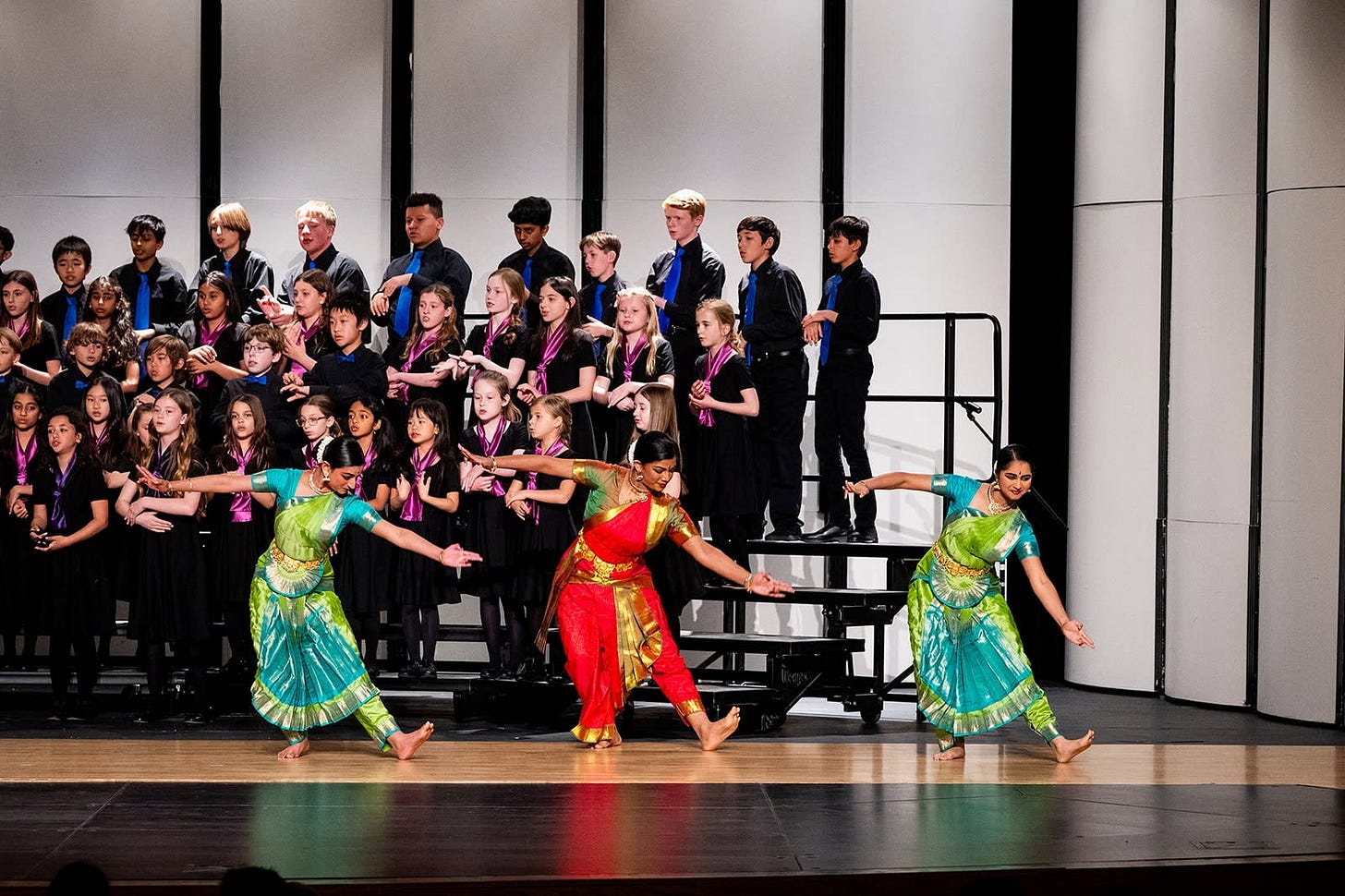
Most recently, Roy even worked together with Young Naperville Singers and their artistic director Angie Johnson to introduce Bengali folk music into their repertoire. Through renown writer and poet Rabindranath Tagore’s piece, “Amar Sonar Horin Chai’s (I Want The Golden Deer)”, Roy provided an accessible bridge for her students to learn Indian music. Her husband, who is full Bengali, was able to help her translate the work so it was more easily digestible for a children’s choir.
During the performance, Roy also brought in traditional Indian dancers and an Indian tabla1 player, creating a more lively, immersive experience. In her future concerts, she hopes to bring more of that music to the forefront.
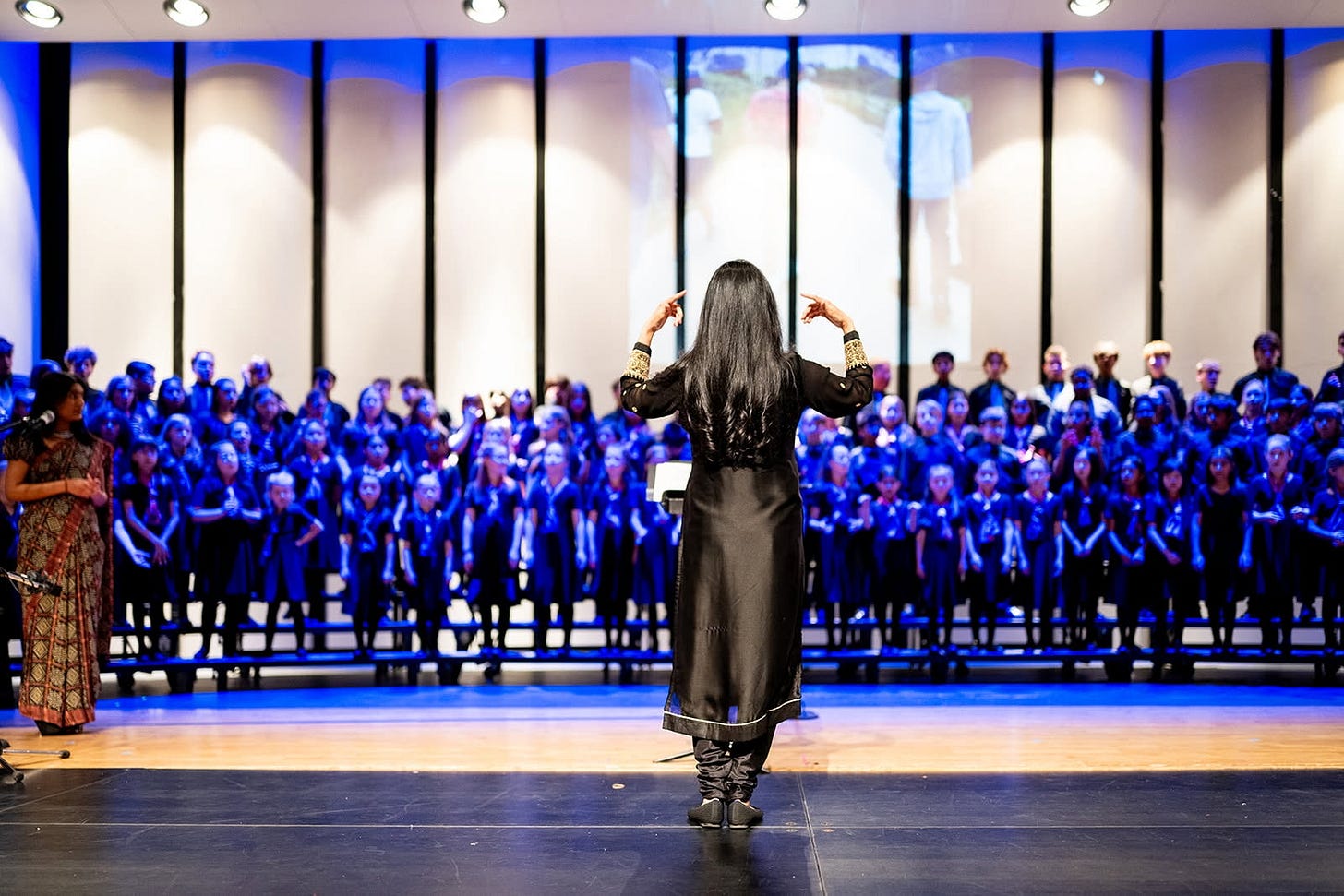
However, there’s still a delicate balance between educating others about your cultural background and how it impacts your identity.
“Sometimes people look at you, see you’re Indian, and sometimes then assume you have this vast knowledge of Indian history and culture. I’m continually learning and growing, and drawing from my life experiences as an Indian American.”
Within the U.S. public school system, Asian Americans made up only 2% of teachers and 1% of school principals, as of 2020 (National Center for Education Statistics).
“In previous years, I didn’t really open about my background in my job environment,” Roy reflects. “But now, I feel more comfortable to do so — in showing that anyone can do any career, and you can do what I’m doing, and get to these places when you have the passion and support to do it. As I got better and more conscientious, I wanted to give students a platform.”
**
When it comes to over two decades worth of unforgettable memories, Roy says it’s hard to pick just one that stands out.
“Seeing how to curate a family atmosphere where kids can feel themselves and feel safe is one of the most gratifying things. Seeing community, trust, and positive dynamics,” she says during our last conversation.
“It was almost cathartic this year,” she adds. “The eighth-grade kids were just so kind to each other and created such strong, wonderful bonds. They know the journey they’ve taken these last three years. Every year is very different.”
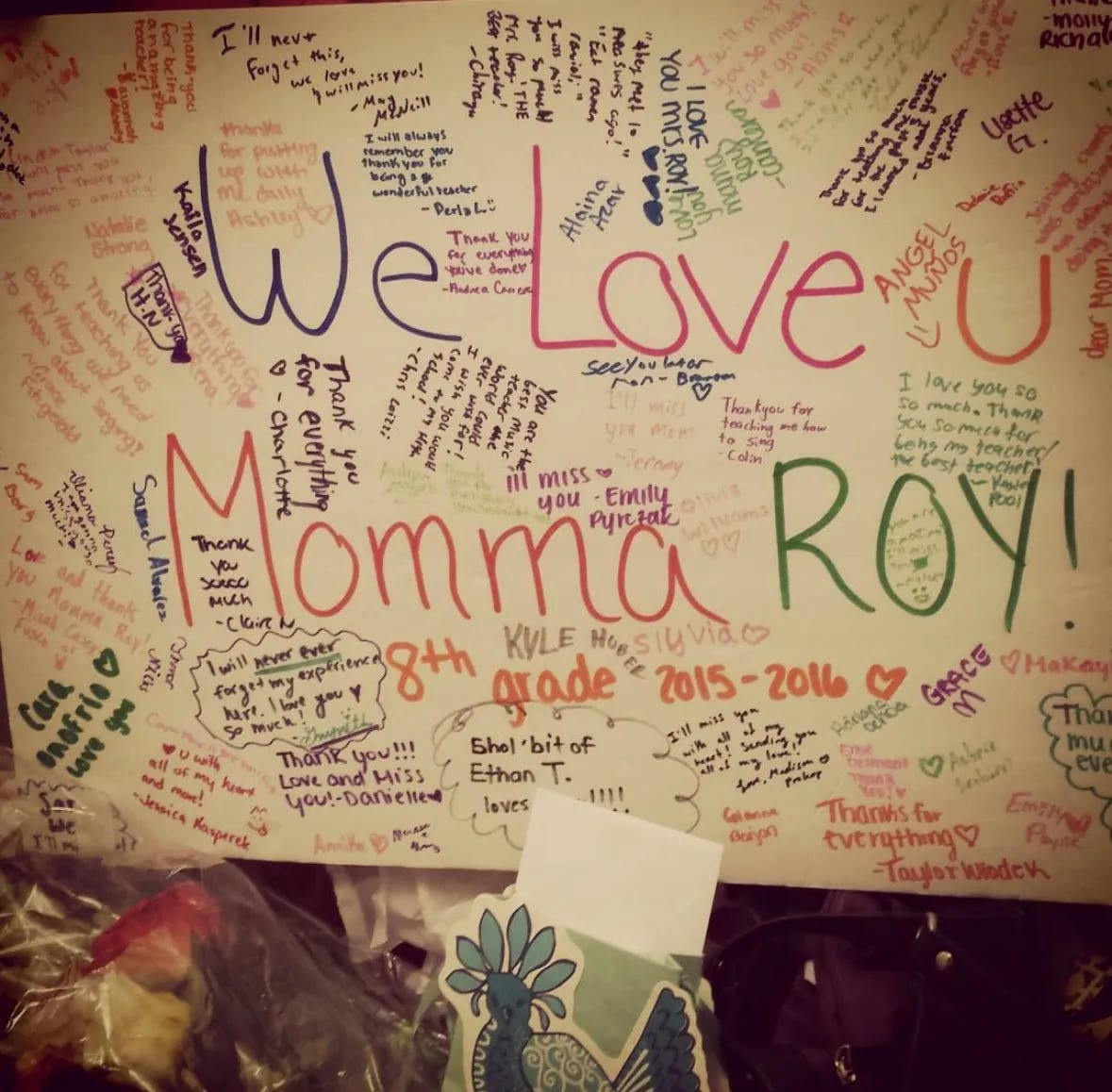
Especially navigating teaching post-COVID, Roy says it’s given her a lot of time to reflect and be as present in the moment as she can.
“It’s really important to slow down and connect, and everything else comes later.”
Personal Life
Now, nearly two decades later, she now has two children and is happily married. Throughout her tenure, she has had countless career-defining moments. In her personal life, choir has also profoundly impacted her — from inviting that year’s Bella Voce members to her wedding, to the overwhelming support she received from students during the first pregnancy.
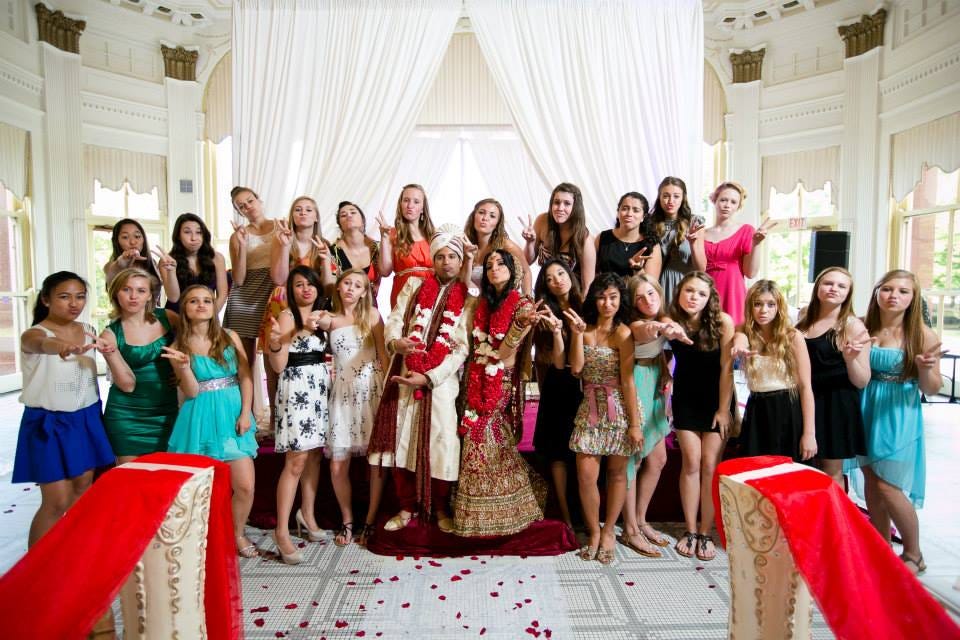
“I’m trying to instill the importance of music to them, and they inspire me,” she says. I hear faint giggling as her son crawls onto her lap. “I try to get them involved in the joy of music. We learn so much about our lives and others’ through music, and I want them to have an appreciation for that.”
When we talk, the kids have just enrolled in piano lessons, with her son just starting a little over a year ago.
“I let them go at their own pace,” she says. “Having them around, they’ll subconsciously be singing or emulating things. To me, it’s astonishing that those moments really do matter. You don’t think they’re paying attention, but they are.”
Lately, they’ve been in a peak inquisitive phase, asking questions about Elvis, the Beatles, and a lot of Western music history.
“I’ll purposefully play songs from other cultures, and sometimes they’ll have questions I don’t have the answers to. But then, we can figure it out together.”
Outside of the workday, Roy similarly spends her evenings and weekends performing and conducting.
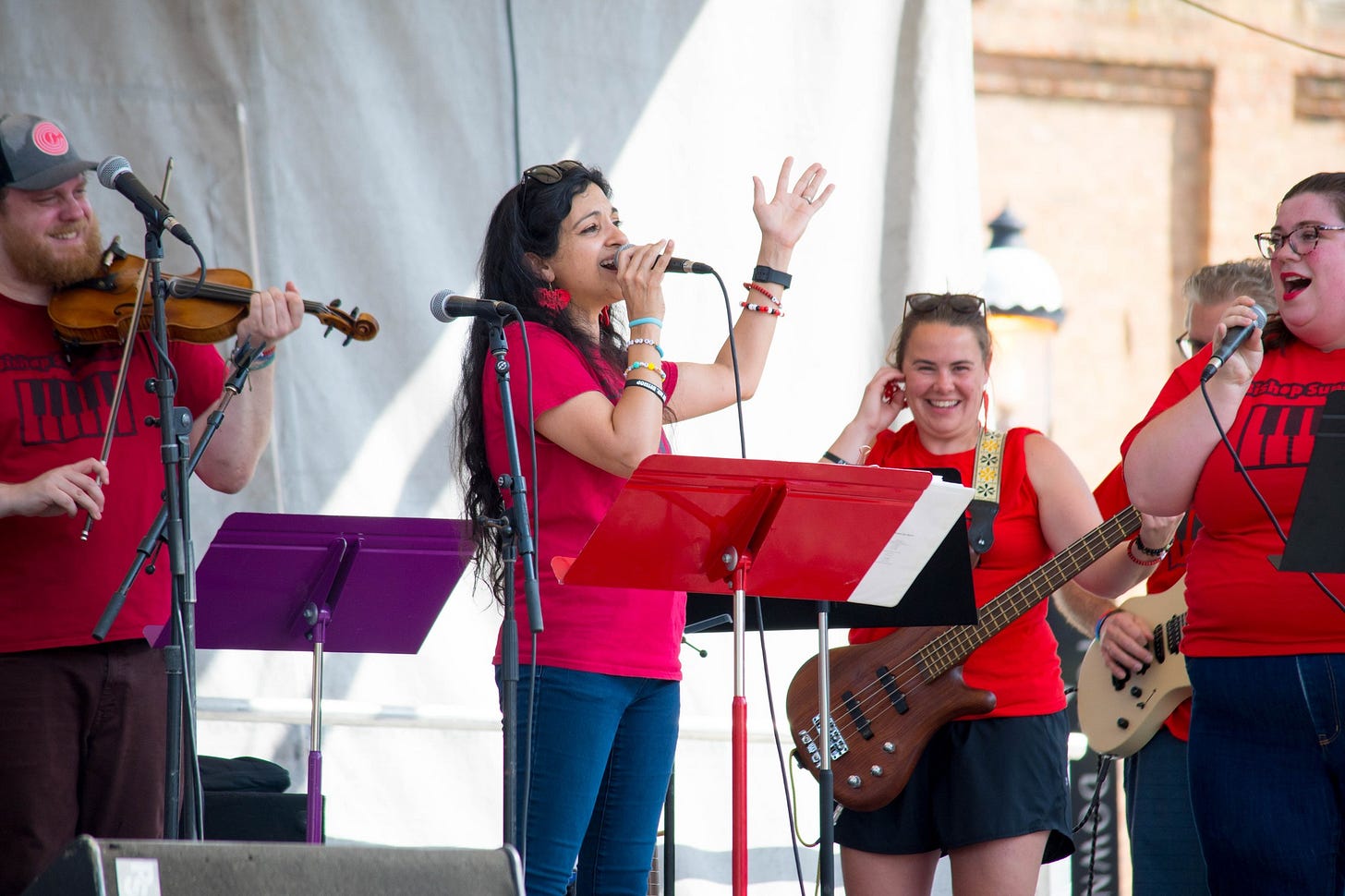
She’s part of several community bands, including the Glen Ellyn Jazz Ensemble, The Kid Ups, and The Bishop Super Band (the latter honoring her late co-director through music). She also guest conducts for various festivals and leads music camps in the summer. In every aspect of her life, music sits lovingly at its core.
A Lasting Note
“I think it’s interesting,” Roy muses. “Being in my forties and being able to appreciate all the things my parents did from a new perspective. Things click in your twenties, and they click later, and your parents are aging. It’s a different stage of life from where you are, but it’s worth acknowledging.”
“As you get older, you need that time for growth — to appreciate things because you have a different lens of life experience,” she adds, her tone thoughtful. “Like, ‘Oh. I get it now.’ And now, I can look back and be grateful — like, I get why my teacher was stressing, why this was important.”
She adds that it’s also different in another way, with the passing of our beloved music teacher Matt Bishop, in early 2024. For over a decade, Roy and Bishop shared a choir room, creating endless memories and music together.
“There’s a void I will forever feel not having Matt here as my dynamic partner, friend, coworker, confidant,” Roy tells me. “I am so grateful for the twelve years we had to work and create together. Now, I navigate a new chapter without his presence, keeping his memory and legacy alive.”
As she enters this new period of growth and reflection, she’s also taken more steps to find community. In the past few years, she has found several online South Asian communities, including a Facebook group for South Asians in Western Classical Music. Through the group, Roy was eager to discover several Chicago-based Indian musicians who were “just like her.”
“There are so many of us all around the world, everywhere.” As she speaks, her enthusiasm is almost tangible. “There are more of us here, and we’re trying to find each other. And a lot of people have found each other.”
I can hear her smile through the phone as she walks through a list of Indian music teachers in Chicago — though still not many, their names and music concentrations. The joy is palpable — in this endless search for belonging.
“It’s only up until recently that we get to discuss this and tell our stories,” she says, hopeful and excited. “It feels promising to me.”
At this point, almost an hour has passed, even though it feels like mere minutes. As we end the call, both giddy and lit aglow from the warm reunion, she leaves me with a lasting note —
“Music unites young people. If you feel accepted and united, it’s a wonderful thing to celebrate.”
What Comes Next
I first reached out to Roy nearly 3 years ago to connect on this project. It was the summer I graduated college and we hadn’t talked since 2014 — over 10 years ago.
Not only was she ecstatic about the project, but also incredibly kind, gracious, and passionate about helping her students — even long after they’ve graduated. Before publishing this article, I stopped by the school to have our long-awaited reunion.
Stepping back into the choir room, so much is the same, yet everything has changed.
Before we catch up, she invites me to watch Bella Voce perform a few songs. The kids are dramatic, energetic, and confident, with a talent that blows me away. Now on the other side of the piano, I sit beside Roy as she masterfully accompanies them, in disbelief of how fast the years go by.
“I get older and they stay the same age,” she laughs. The students affectionately say their goodbyes as they shuffle to their next period.
She tells me it’s different now — the kids are embracing being themselves and eager to explore other cultures. The landscape is changing. She’s personally worked with more Asian educators than ever before.
There is a kind curiosity that has grown over the past few years, paving the way for more education and acceptance through song.
Looking back, those middle school years were filled with such undeniable sparks — you are still bright-eyed, almost obnoxiously quirky, and most importantly, unapologetically yourself. You are exploring who you are and who you might want to be. And with every coming year, that opening for discovery only grows wider.
That’s why I will forever cherish the memories I made during that time — because of educators like Roy, who saw us, believed in us, and taught us how to create something beautiful within ourselves.
To Roy, and all the revolutionary educators out there — thank you for uniting us and for your unwavering dedication and service. Your joy, love, and passion reverberate through generations to come.
In loving memory of Matt Bishop (1989 - 2024), our cherished music director, who sadly passed last year after our first interview.
The moment Bishop walked through our middle school’s doors in 2012, his positive impact on the community was immediate and profound. For the next 12 years, Bishop and Roy shared the same choir rooms and dreams as co-educators, creative partners, and dear friends.
To support Bishop’s scholarship fund, The Wooden Elephant, please click here. All proceeds will go towards graduating seniors who demonstrate his outstanding dedication towards community and music.
Our last performance together at eighth grade graduation, singing “For Good” from the musical Wicked. Conducted by the brilliant, endlessly talented Matt Bishop, whose kindness knew no bounds. | 2013
A tabla is a small pair of hand drums that has been fundamental in Indian classical music since the eighteenth century.





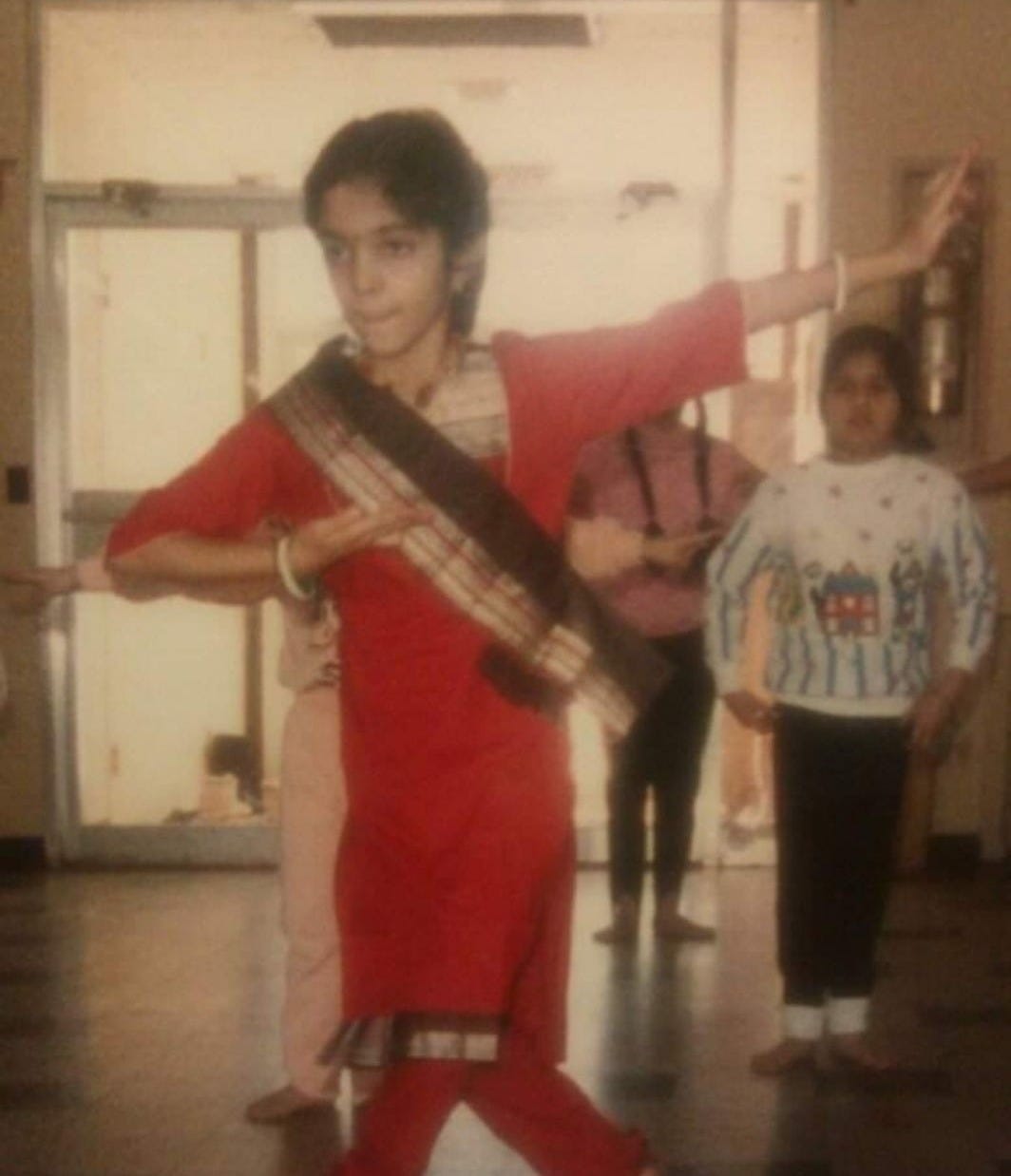
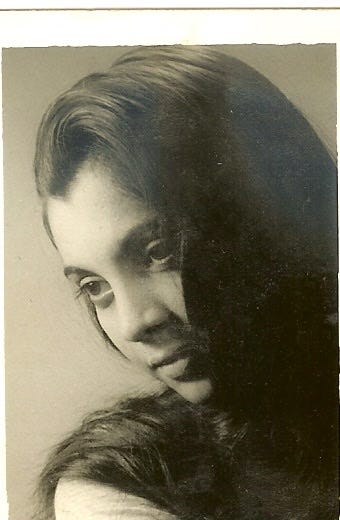


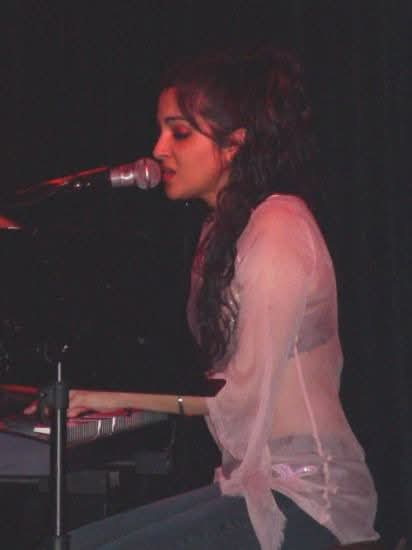
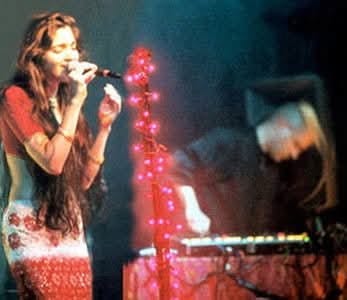
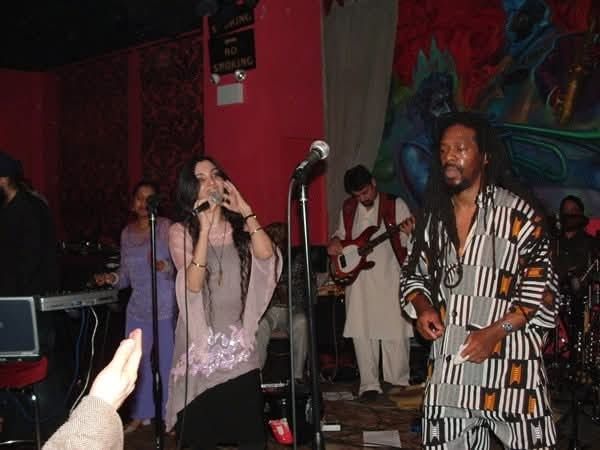
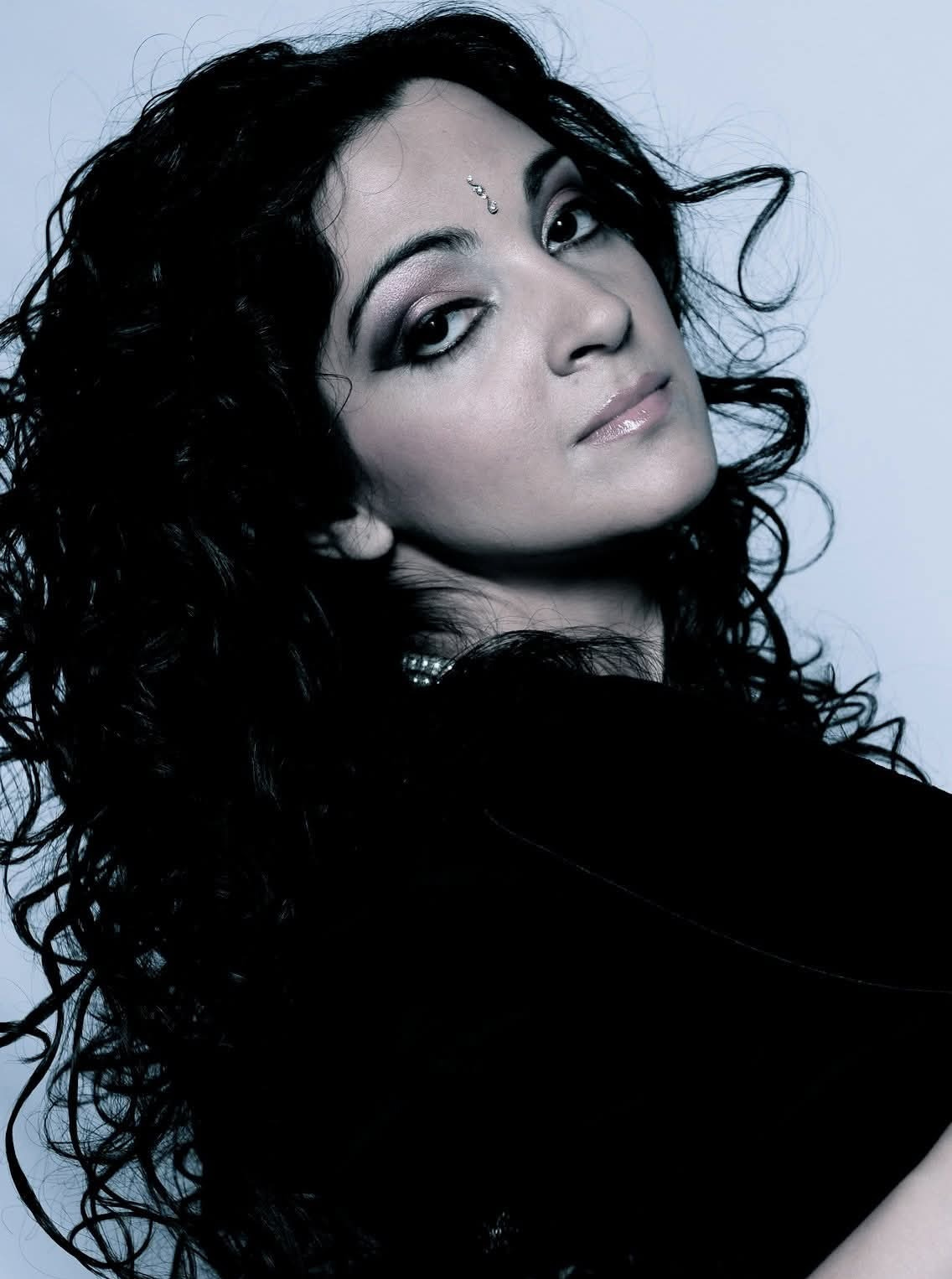
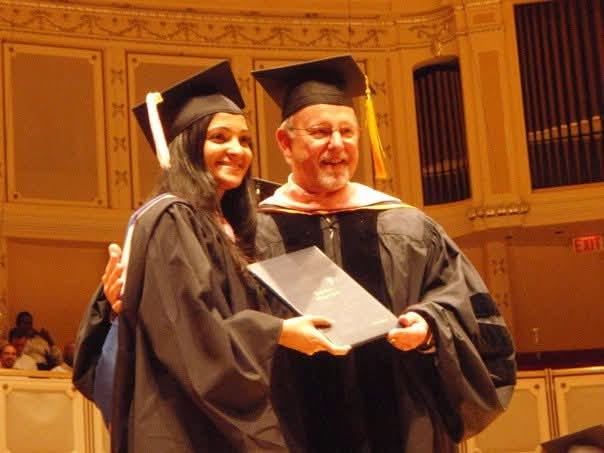

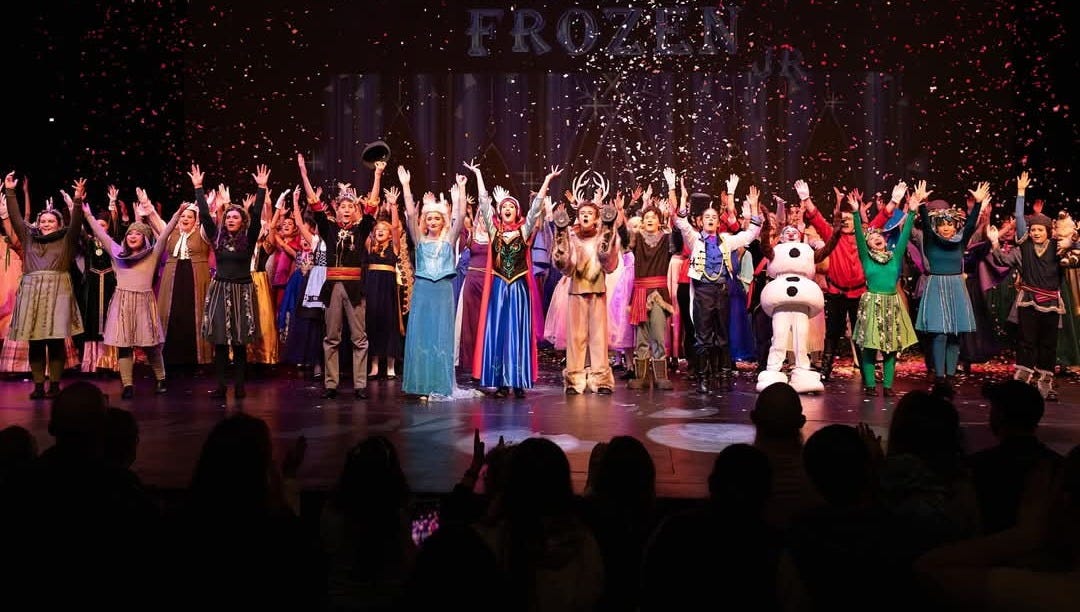
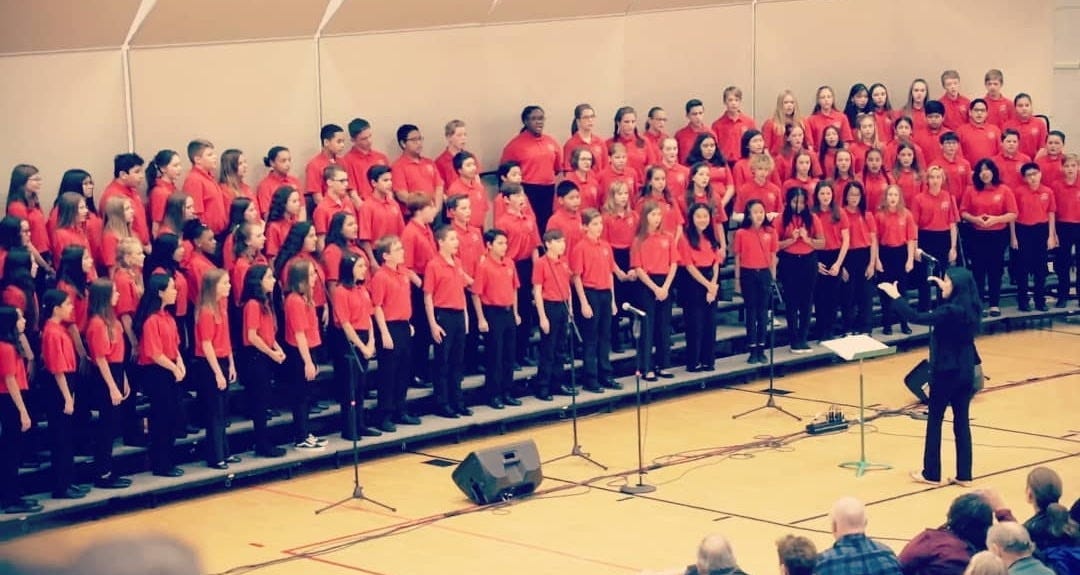
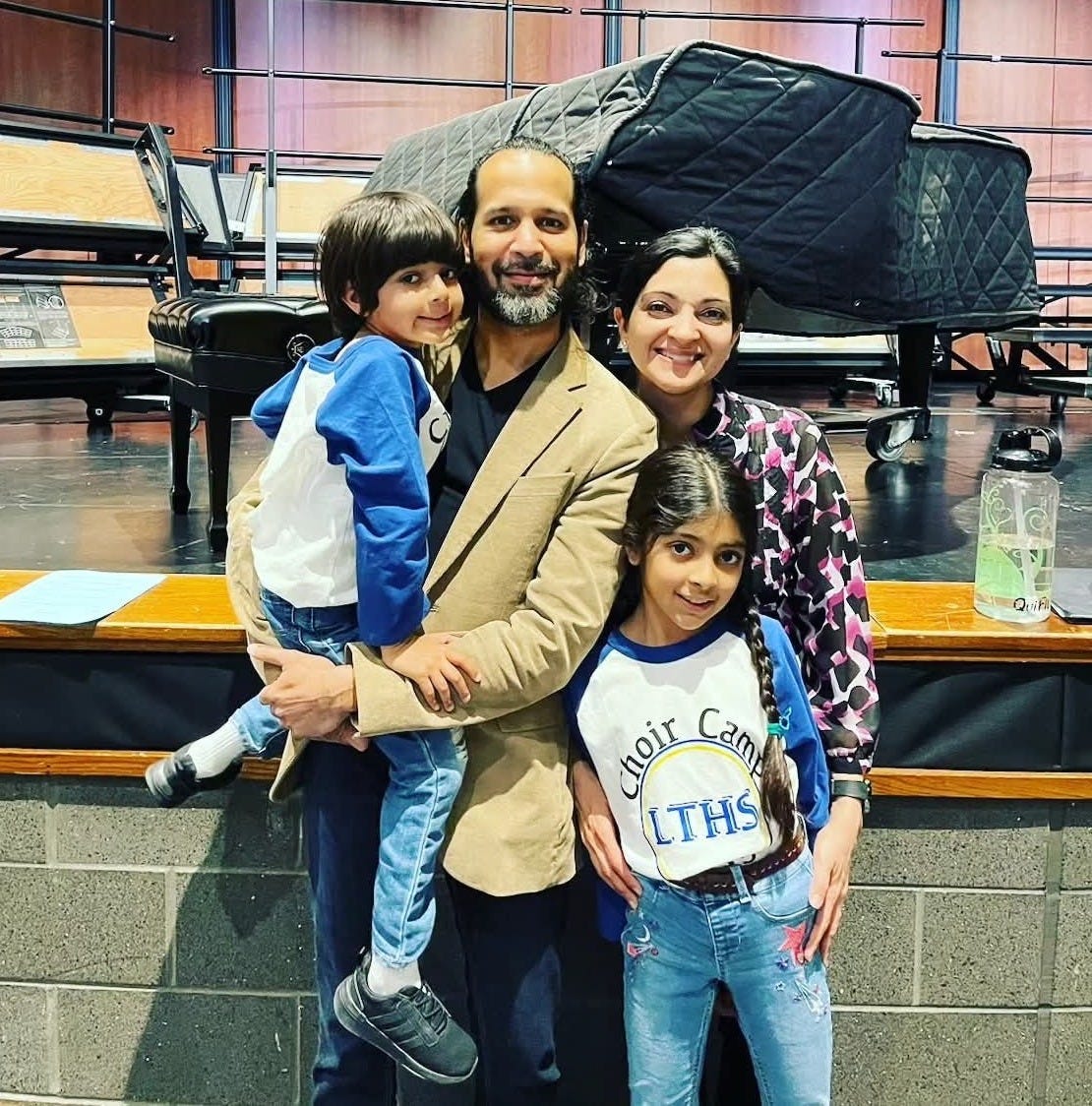
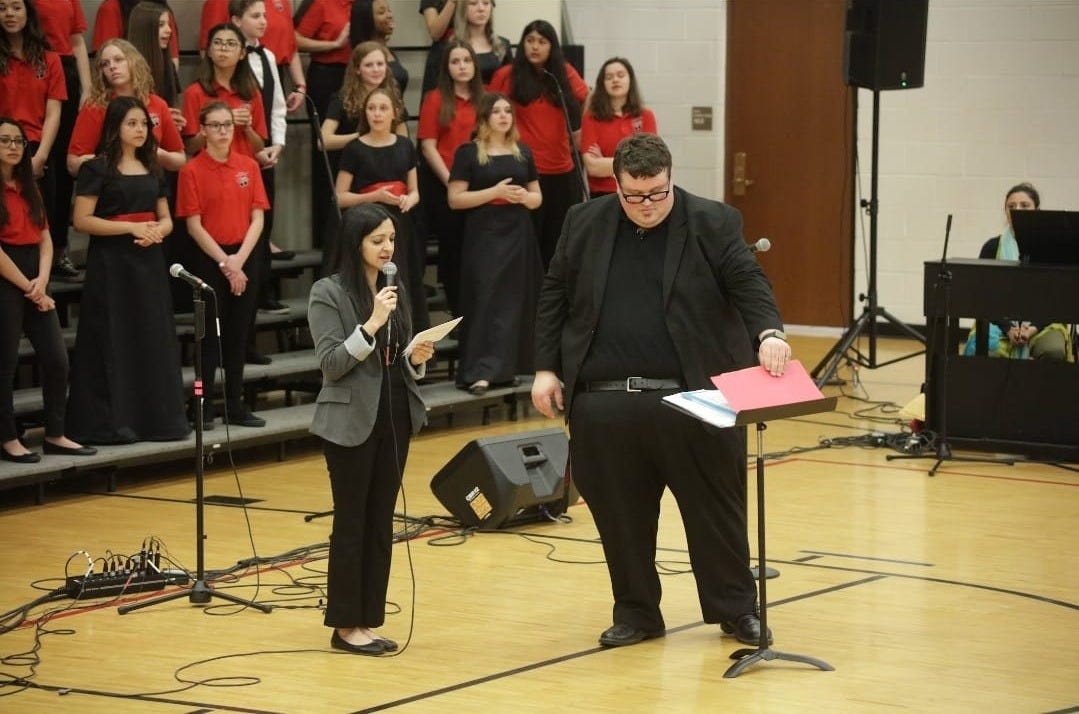
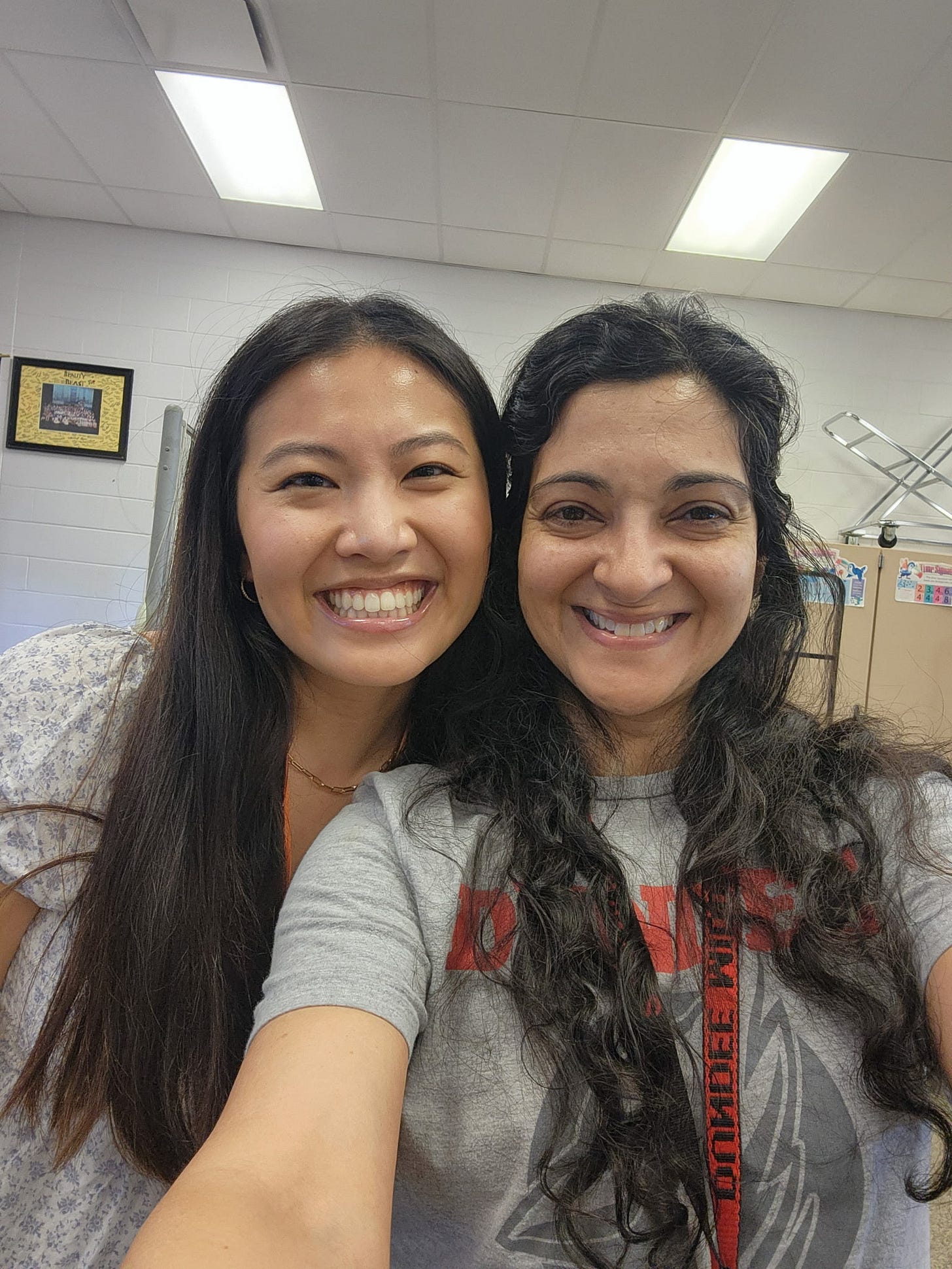
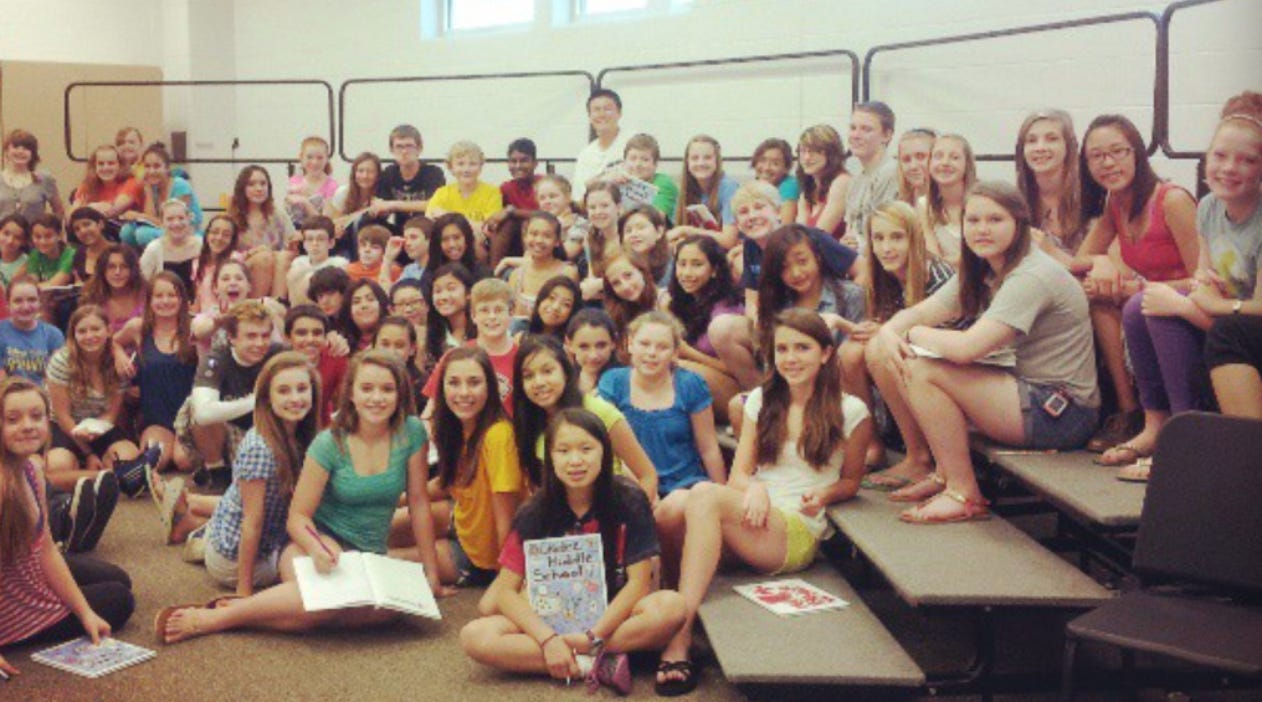
This piece!!!! Mrs. Roy is such a force of nature; brilliant, exceptionally talented, compassionate, and genuinely positive. Thank you for giving her the spotlight she deserves! There are so many cool things I never knew about her life because, as a 12-year-old, you never ask those kinds of things of your teachers. But this piece made me wish I had. Brilliant job highlighting a brilliant woman. Also, the trip down memory lane with the Bella Voce video and 8th grade choir photo…!!!